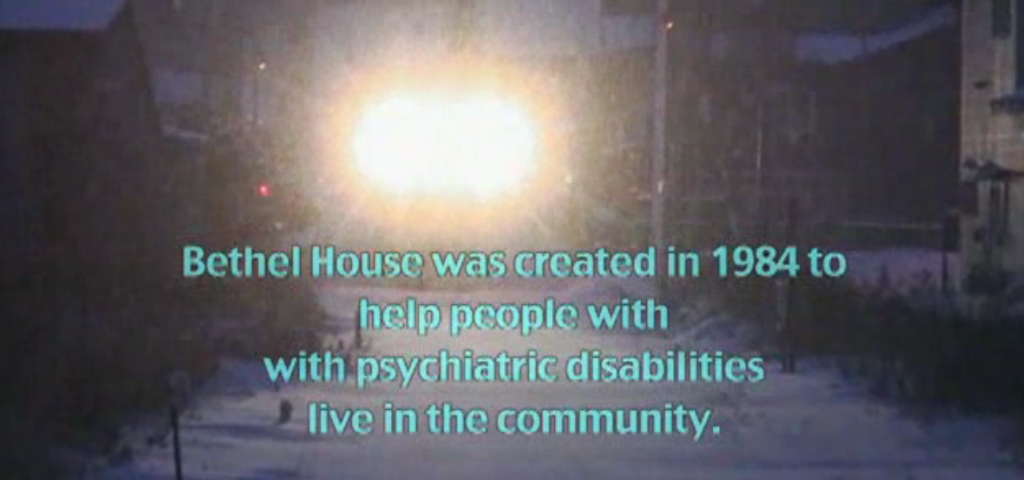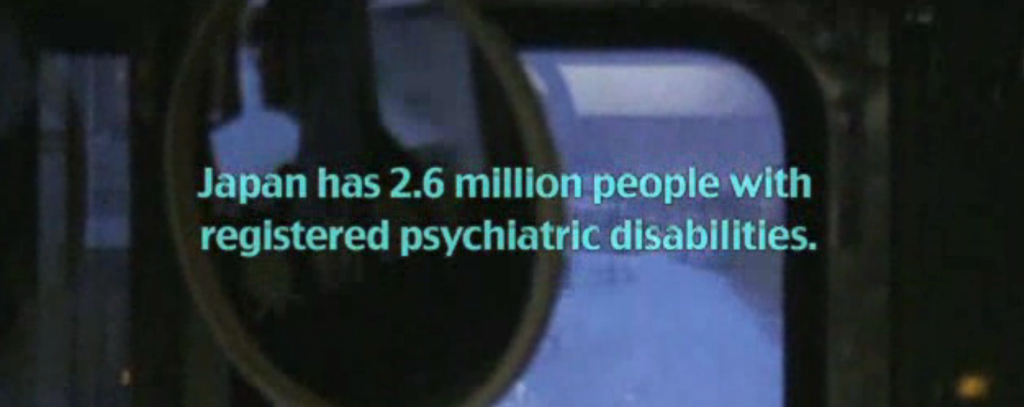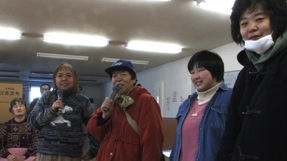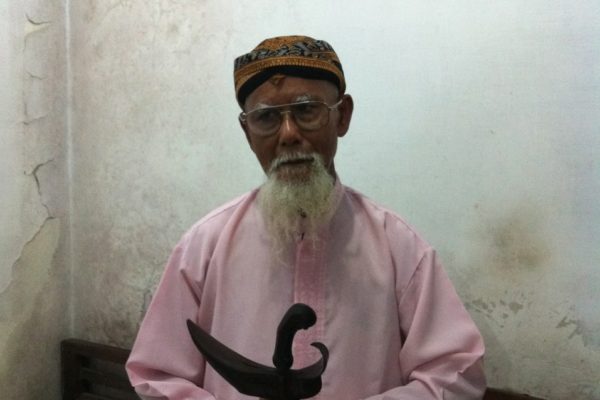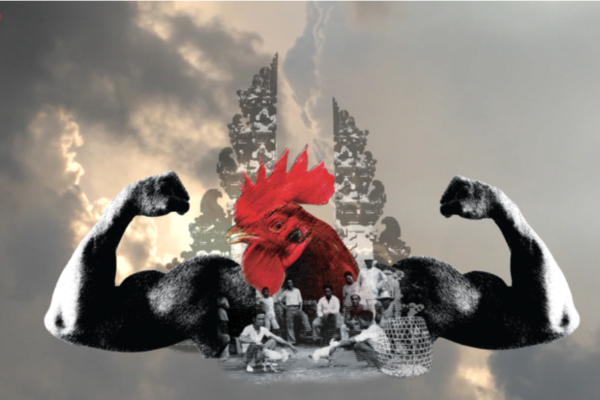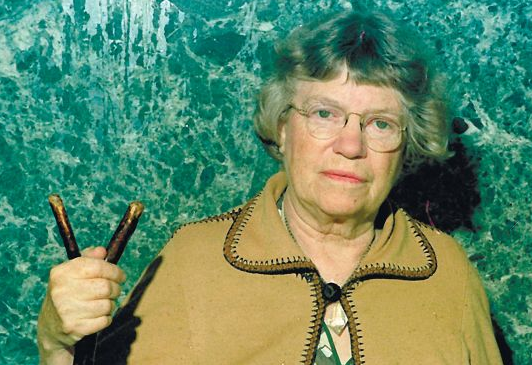Despite the increasing use and production of film and video in various fields of anthropology, there are simply not very many ethnographic films available on the topic of mental illness, particularly as experienced outside of the United States and Europe. Indeed, such films that do exist, while valuable, are now somewhat outdated and can basically be counted on one hand: the two most commonly assigned in anthropology courses are The Spirit Possession of Alejandro Mamani (1973) and Ronald Simon’s Latah: A Culture-Specific Elaboration of the Startle Reflex (1983). Elemental Productions’ own Afflictions series has sought to fill in this gap; Karen Nakamura’s 41-minute film Bethel: Community and Schizophrenia in Northern Japan (2010) is another rare and commendable recent production that provides a contemporary, sensitive, and dynamic look at mental illness. View the trailer.
Bethel is an intentional community for people with schizophrenia and other mental disorders founded in 1984 in Urakawa. In the opening to her film, Nakamura establishes that in Japan institutionalization—sometimes lifelong—combined with pharmacotherapy that at times is functionally little more than sedation, is a common response to major mental illness such as schizophrenia. Under the guidance of psychiatrist Dr. Toshiaki Kawamura and on the impetus of founding social workers and members with major mental illness, Bethel has developed an alternative approach that is rooted in communal living, collective work, a meaningful engagement with “voices” rather than an attempt to mute them with medication, and interpersonally developed strategies for living as richly as possible with mental illness.
Like the community it depicts, the film eschews a clinical approach. Diagnostic categories are not explicitly discussed, although various members mention aspects of intellectual disability, depression, and addiction in addition to schizophrenia as part of their experience. And just as the title signals, this film is indeed primarily a portrait of this community, using multiple voices and events to capture its ethos, dynamics, and norms. Nakamura told Somatosphere that she modeled her study in part on old-school ethnography, “the type of village-level study that anthropologists used to do” and that she “wasn’t as interested in looking at symptoms or diagnostic categories as how the community functioned.” As such, the viewer becomes acquainted with the routines, rituals, and practices that sustain the members; daily morning meetings, weekly social skills training and support group sessions, down time spent hanging out, the collective work members do packing dried seaweed, the meals they share, the songs they write and perform to express their unique experiences of mental illness, weekend excursions to their psychiatrist’s house in the country, yearly award ceremonies, and more.
In a way, the film is all about relationships—not necessarily individual relationships, but the quality of relationships fostered at Bethel and the very fact that the group remains primarily focused on “com[ing] to terms with themselves as social beings” rather than on curing or eradicating their symptoms. This social response to schizophrenia takes a number of interesting forms, sometimes quite ingenious. Perhaps most notably in the film, the group remembers how they responded to one member’s delusion that he had to go to a deserted park in the dead of winter in order to board and navigate a UFO; they did not discount his experience or scoff at his delusion, but instead persuaded him as a group that he should not leave right away because he would need to get his UFO driver’s license first…and then later awarded him with the “Best Hallucination” distinction at an annual ceremony!
The group’s dedicated focus on relationships is not always easy, however, and Nakamura includes a somewhat painful scene of an older woman harshly chastising a younger member, spurring a concerned group discussion about the best way to communicate with one another regarding shortcomings and conflicts. The impression this viewer got was that despite the very-real challenges and tensions, these members are quite capable of upholding values of the group, advocating for others, and working things out in a self-determined fashion.
The relationship in evidence between Nakamura and the members further undergirds the strength of the film. Nakamura’s warm and spirited rapport with the various members was evident in conversations where her presence is felt behind the camera, either via an occasional throaty rejoinder, direct address by one of her subjects, or even an extended negotiation where she tries to convince a reticent member to tell his illness narrative one more time for her film (ultimately he chooses not to, with Nakamura’s agreement). The members’ rapport with one another is also tangible, as even when the camera is focused on individual speakers their fellow members can be heard chuckling or offering words of encouragement or contestation in the background.
Finally, the film was very evocative of place, putting the community in relationship to its surroundings. Bethel is located in Northern Japan, and the film was shot during winter. Nakamura’s many images of the town, with its snow drifts and icy eaves and chilly harbor, provided an ecological grounding so that Bethel and the people living in it are emplaced, felt to be part of the wider local built and natural environment. This provides some visual context for the American viewer who might be unfamiliar with small-town Northern Japan; but I’m sure it is also theoretically important to Nakamura to emphasize the fact that the mentally ill members of any society are part of the fabric of that society, and should not be interpreted as isolated nor forced into such a position. At the same time, the shots of the wintry landscape and buildings also underscored an atmospheric sense of safe haven created inside the Bethel structures, evoking both a literally and metaphorically warm place that someone might enter into after being “left out in the cold,” a nod to unfortunately enduring stigma and the social consequences and loss of major mental illness in mainstream society.
I think one of the many strengths of the film is that it doesn’t make broad claims or generalize its findings; the viewer comes to know Bethel and some of its members, but can’t presume to know “what it means to have schizophrenia in Japan.” Yet despite the fact that I feel this is a strength, I was left with some follow-up questions that might be relevant within the field of psychological anthropology, the most pressing of which is, are there aspects of Northern Japanese culture that might uniquely support this collective approach to recovery or living with mental illness? Dr. Kawamura speaks eloquently on the benefits of group membership and support, saying “when we work together we can face our problems” and “people get better ‘The Bethel Way’ because of everyone’s help […] This style of treatment I think is more stable than ‘curing them.’” Within the psychological anthropology and comparative development literature much has been said about Japanese cultural models of “interdependence” and “symbiosis” as compared to the West, and yet Nakamura says that in this seemingly culturally syntonic model Bethel’s approach is innovative for Japan. Certainly there have been other attempts to similarly engage with mental illness in other parts of the world—for example, in the Hearing Voices movement active in Europe—however, I would love to learn more about what aspects of Japanese culture are congruent or not with Bethel’s approach, how the normative psychocultural environment has historically interacted with cultural models of mental illness, and what the response of the broader Urakawa community has been to Bethel’s integrative approach. Perhaps these are issues Nakamura addresses in her written ethnography on the same topic, A Disability of the Soul: An Ethnography of Schizophrenia and Mental Illness in Contemporary Japan (2013), which after watching the film I now very much would like to read.
Ultimately, despite my curiosity to know more about the cultural specificity of Bethel, what I was perhaps most struck by in Nakamura’s film is that in listening to the members of this community of people with schizophrenia in Japan talk about the aspects of Bethel House that has been crucially therapeutic, I hear echoes of the conclusions drawn in Elemental’s own Afflictions series, which in turn echo more general, cross-culturally relevant findings about living with schizophrenia regarding what is most important and meaningful to people with mental illness, and what truly helps them feel better. In the words of Yayoi, one young member of Bethel,
“The people here have such warm souls […] even though they weren’t my parents they gave me unconditional love […] if I was crying, they would give me a hug and pat my head […] it seems like stuff like this should be commonplace, but it isn’t. That’s what I liked about this place.”
Or in the words of another member, Tsutomu Shimono, “the hospital was like a prison, a totally controlled environment. When I thought about it later, instead of going to a psychiatrist, I should have gone to a bar, and talked out my woes there.” In contrast, when he came to Bethel he saw, “Even though [the members] were unwell they were still going outside and living a regular life. I thought, everything is OK now.”
Time and time again it has been demonstrated that less stigmatizing labels, flexible work routines, meaningful social roles and networks of support promote ongoing wellbeing and positive outcomes for people with mental illness, even without permanent “recovery” from symptoms; this was certainly the case for Ni Ketut Kasih in our film Ritual Burdens and Pak Kereta, in our film Shadows and Illuminations.
In addition to a general audience interested in the subject, Bethel: Community and Schizophrenia in Northern Japan will surely be of use in anthropology, psychology, and disability studies classes. The film can be watched or taught in conjunction with Nakamura’s aforementioned recently published written ethnography about the same group, and complements her previous work concerned with disability and minority social movements, Deaf in Japan: Signing and the Politics of Identity (2006). As Nakamura herself has suggested in interviews, the film is also a fruitful vehicle for service providers, educators, policy makers, and family members in the United States to comparatively reflect upon our own system of mental health care and how it might construct or foreclose opportunities for such therapeutic communities.



